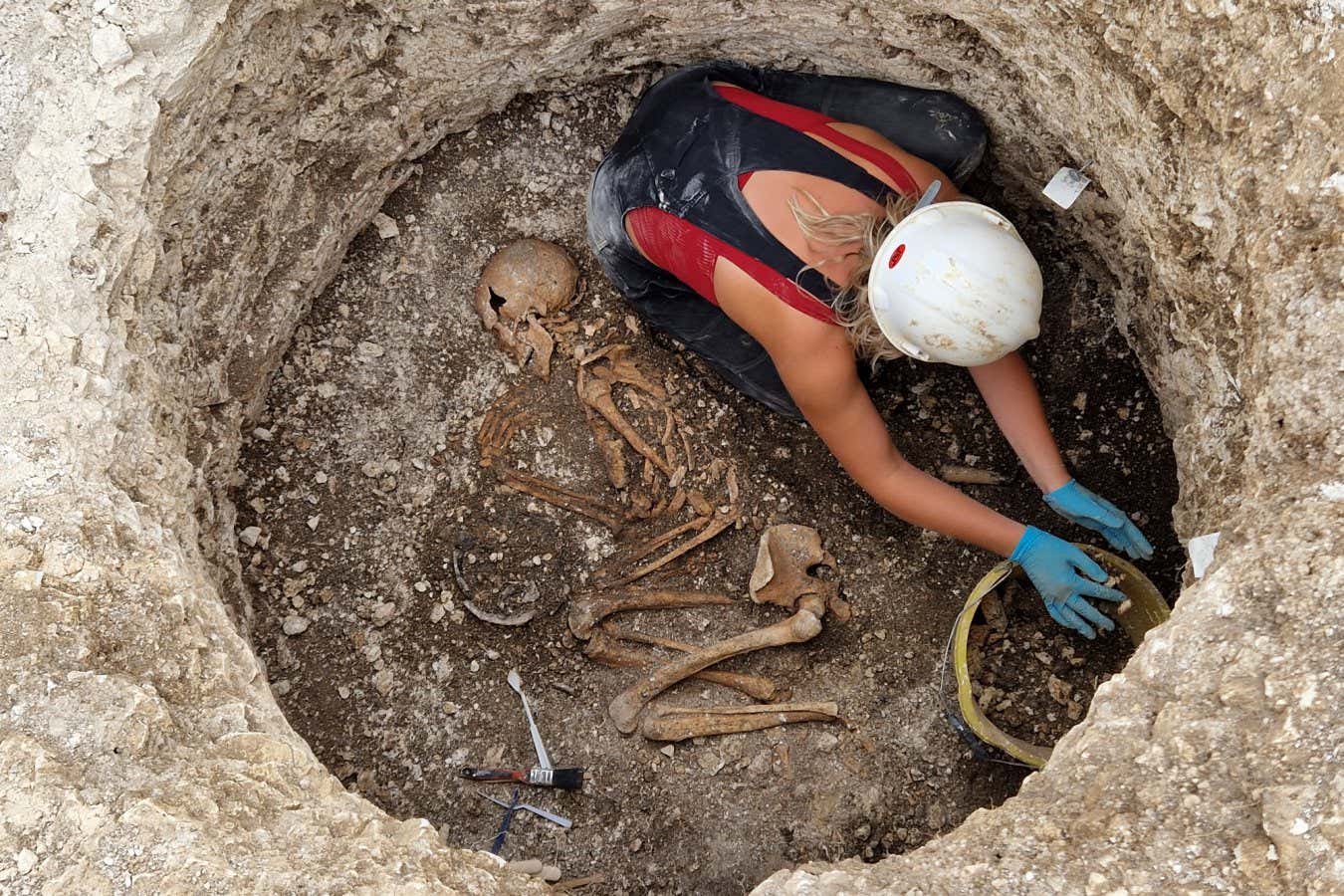Genetic evidence from Iron Age Britain shows that women tended to stay within their ancestral communities, suggesting that social networks revolved around women
By James Urquhart
15 January 2025
A late Iron Age Durotrigan burial at Winterborne Kingston in Dorset, UK
Bournemouth University
Genetic analysis of people buried in a 2000-year-old cemetery in southern England has bolstered the idea that Celtic communities in Britain placed women centre-stage, showing that women remained in their ancestral homes while men moved in from other communities – a practice that lasted centuries.
The work supports growing archaeological evidence that women had high status within Celtic societies across Europe, including Britain, and gives credence to Roman written accounts that were often thought to be exaggerated for Mediterranean audiences when they described Celtic women as empowered.
Read more
Amazingly preserved Bronze Age village reveals life in ancient England
Advertisement
Since 2009, human remains of the Durotriges tribe have been unearthed during excavations of an Iron Age burial site at Winterborne Kingston in Dorset, UK. The Durotriges occupied the central southern English coast from around 100 BC to AD 100 and probably spoke a Celtic language.
Human remains from Iron Age Britain are rare because prevailing funerary customs, including cremation or depositing bodies in wetlands, destroyed them. However, the Durotriges buried their dead in formal cemeteries in the chalk landscape, which aided their preservation. Archaeologists have found that Durotrigan women were more often buried with valuable items, suggesting high status and possibly a society focused on women.
Lara Cassidy at Trinity College Dublin and her colleagues have now analysed the genomes of 55 Durotrigan individuals from Winterborne Kingston to untangle how they were related to one another and other Iron Age populations from Britain and Europe.
